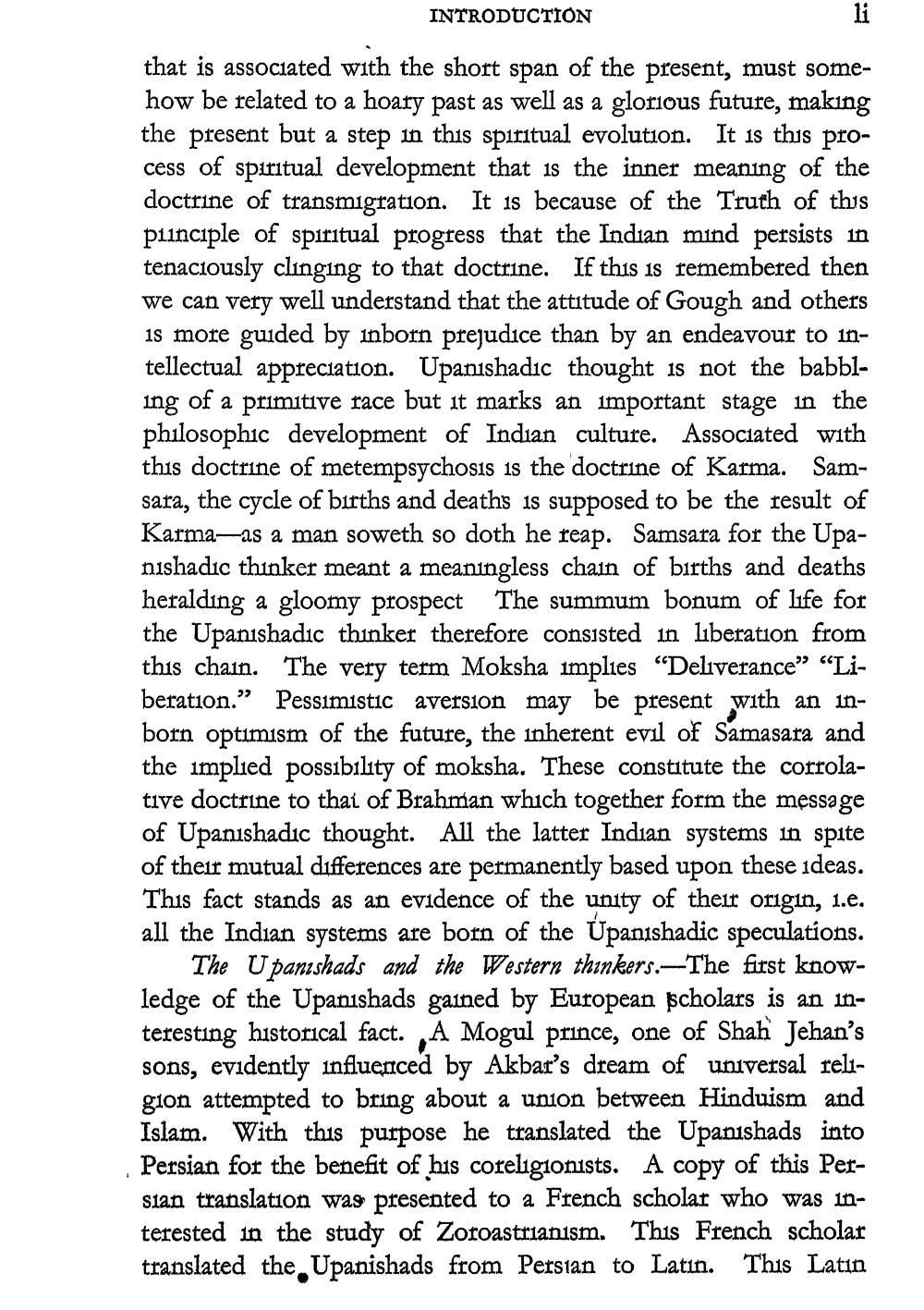________________
INTRODUCTION
that is associated with the short span of the present, must somehow be related to a hoary past as well as a glorious future, making the present but a step in this spiritual evolution. It is this process of spiritual development that is the inner meaning of the doctrine of transmigration. It is because of the Truth of this piinciple of spiritual progress that the Indian mind persists in tenaciously clinging to that doctrine. If this is remembered then we can very well understand that the attitude of Gough and others is more guided by inborn prejudice than by an endeavour to intellectual appreciation. Upanishadıc thought is not the babbling of a primitive race but it marks an important stage in the philosophic development of Indian culture. Associated with this doctrine of metempsychosis is the doctrine of Karma. Samsara, the cycle of births and deaths is supposed to be the result of Karma-as a man soweth so doth he reap. Samsara for the Upanishadic thinker meant a meaningless chain of births and deaths heralding a gloomy prospect The summum bonum of life for the Upanishadic thinker therefore consisted in liberation from this chain. The very term Moksha implies “Deliverance” “Liberation.” Pessimistic aversion may be present with an inborn optimism of the future, the inherent evil of Samasara and the implied possibility of moksha. These constitute the corrolative doctrine to that of Brahman which together form the message of Upanishadic thought. All the latter Indian systems in spite of their mutual differences are permanently based upon these ideas. This fact stands as an evidence of the unity of their origin, 1.e. all the Indian systems are born of the Upanishadic speculations.
The Upanishads and the Western thinkers. The first knowledge of the Upanishads gained by European scholars is an interesting historical fact. A Mogul prince, one of Shah Jehan's sons, evidently influenced by Akbar's dream of universal religion attempted to bring about a union between Hinduism and Islam. With this purpose he translated the Upanishads into Persian for the benefit of his coreligionists. A copy of this persian translation was presented to a French scholar who was interested in the study of Zoroastrianism. This French scholar translated the Upanishads from Persian to Latin. This Latin




